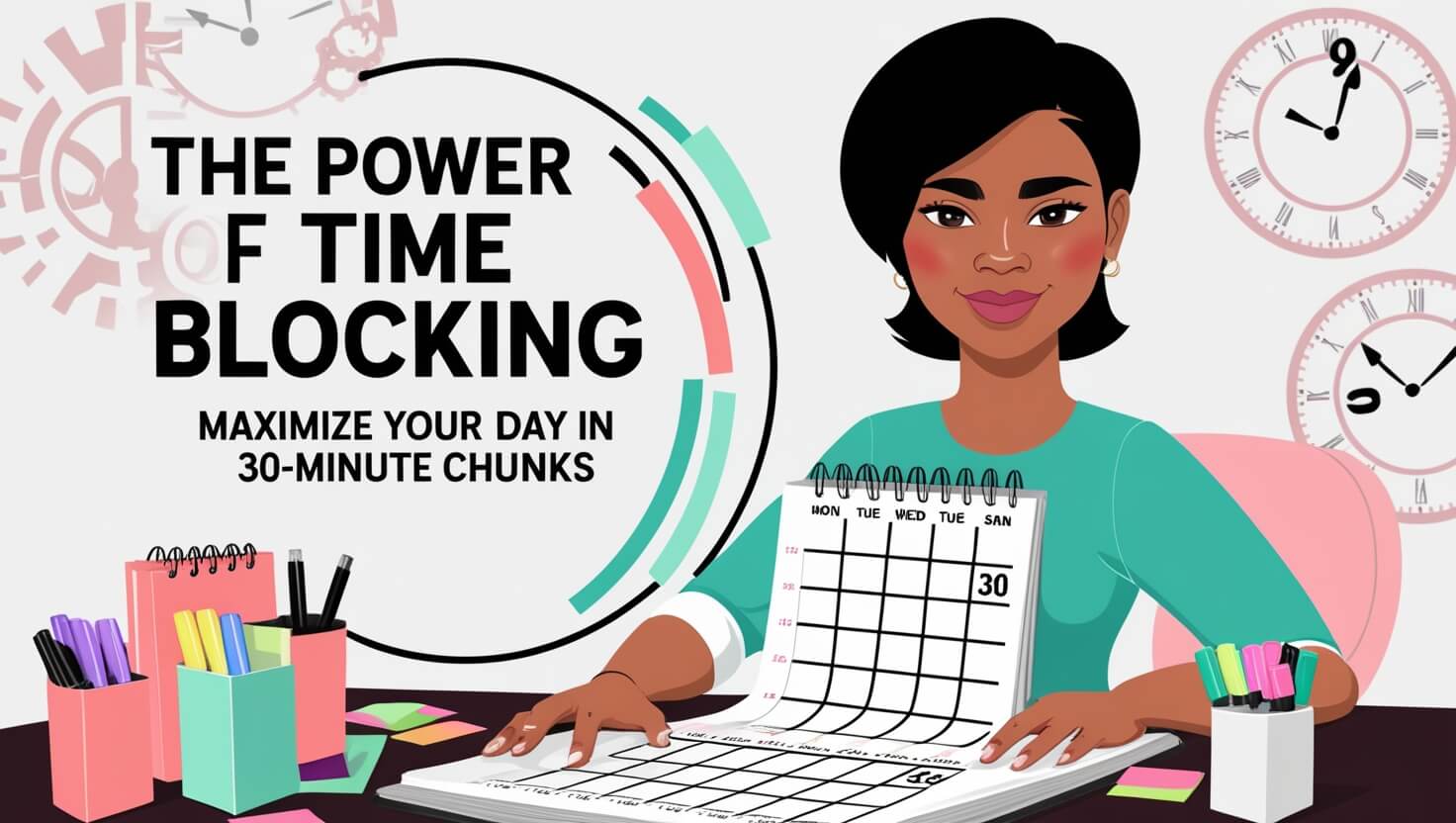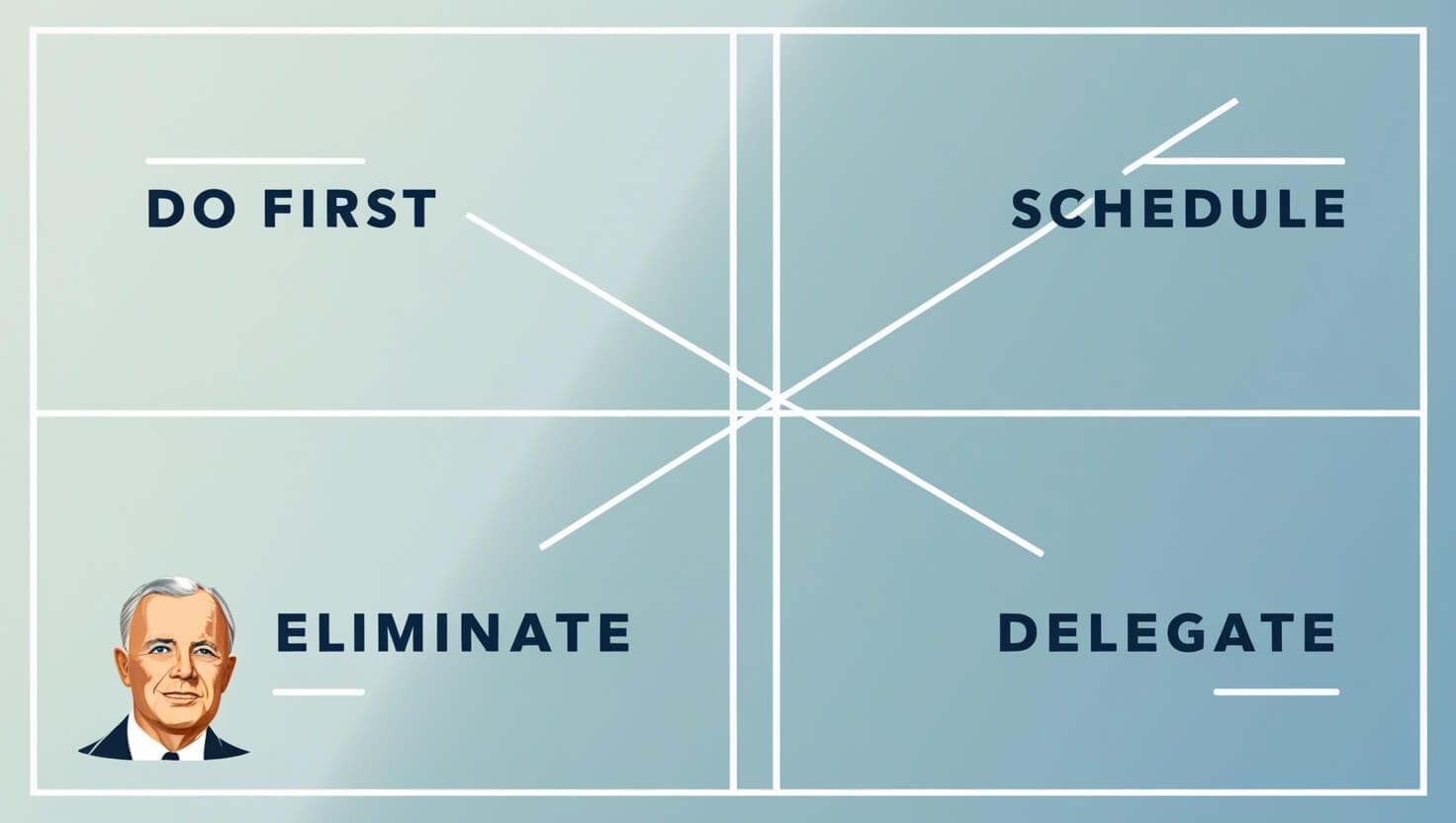Key Takeaways:
- Difficult conversations are inevitable but manageable with the right strategies and mindset
- The PEACE framework provides a structured approach to conflict-free communication
- Understanding personality types and psychological triggers improves conversation outcomes
- Digital communication requires adapted approaches for difficult conversations
- Practice and continuous learning are essential for long-term skill development
- Recovery and repair skills are just as important as initial conversation techniques
- Building these abilities contributes to better relationships and a more collaborative society
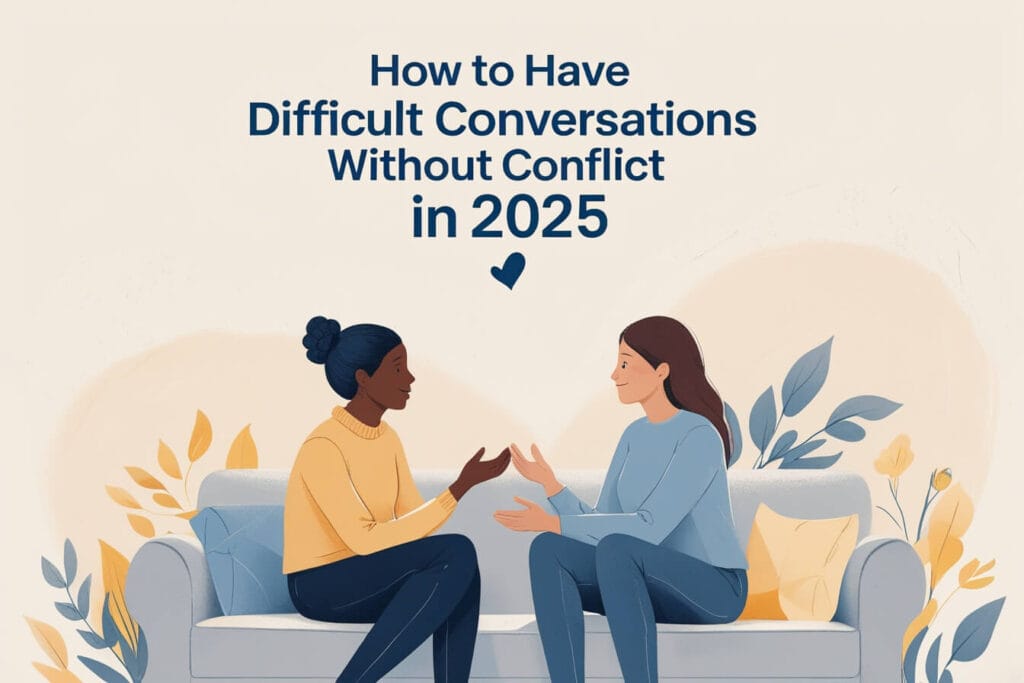
Did you know that the average person avoids difficult conversations for an average of 7 weeks before finally addressing them? That’s a staggering statistic that highlights just how much we struggle with challenging discussions in our personal and professional lives. I learned this the hard way when I spent months avoiding a conversation with my manager about workload expectations, only to discover that my silence was creating more problems than the original issue itself.
Difficult conversations are an inevitable part of human interaction, whether we’re dealing with relationship issues, workplace conflicts, performance problems, or family disagreements. The reality is that most of us weren’t taught how to navigate these challenging discussions effectively, leaving us feeling anxious, frustrated, or completely paralyzed when faced with tough topics. But here’s the thing I’ve discovered through years of both success and spectacular failures: difficult conversations don’t have to end in conflict, damaged relationships, or hurt feelings.
In 2025, our communication landscape has evolved dramatically. We’re dealing with hybrid work environments, digital communication challenges, generational differences, and an increasingly polarized world where even simple discussions can quickly escalate into arguments. The old approaches to handling difficult conversations simply aren’t cutting it anymore. We need fresh strategies that account for our modern reality while drawing on timeless principles of human psychology and effective communication.
What I’m about to share with you isn’t just theory – it’s a practical roadmap based on real-world experience, research-backed techniques, and the hard-won wisdom that comes from countless difficult conversations gone both right and wrong. Whether you’re dreading a conversation with your spouse about finances, need to address a performance issue with an employee, or want to discuss boundaries with a family member, these strategies will help you approach these discussions with confidence and skill.
The Psychology Behind Difficult Conversations

The first breakthrough moment in my journey with difficult conversations came when I realized that most of our struggle isn’t actually about the topic itself – it’s about our brain’s primitive response to perceived threat. When we anticipate or enter into challenging discussions, our amygdala kicks into high gear, flooding our system with stress hormones that make rational thinking nearly impossible. This is why you might find yourself saying things you don’t mean or completely forgetting your main points during heated discussions.
Understanding this psychological reality changed everything for me. Our brains are wired to interpret difficult conversations as potential threats to our social standing, relationships, or sense of self. This triggers what researchers call the “fight, flight, or freeze” response, which explains why some people become aggressive during challenging discussions, others shut down completely, and still others avoid these conversations altogether. The key insight here is that this response is completely normal and predictable – once you know it’s coming, you can prepare for it and work with it rather than against it.
Another crucial psychological factor is what psychologists call “fundamental attribution error.” When someone disagrees with us or behaves in ways we don’t like, we tend to attribute their behavior to their character flaws rather than considering situational factors. For instance, if a colleague is consistently late to meetings, we might assume they’re disrespectful or lazy, when in reality they might be dealing with childcare issues or transportation problems. This cognitive bias makes difficult conversations exponentially harder because we’re essentially arguing against our own assumptions rather than addressing the actual issue.
The good news is that awareness of these psychological patterns gives us tremendous power. When you understand that the other person’s defensive reaction isn’t necessarily about you or your message, but rather about their brain’s threat-detection system, you can respond with more compassion and strategic thinking. This shift in perspective has helped me approach difficult conversations with curiosity rather than judgment, which consistently leads to better outcomes.
The PEACE Framework for Conflict-Free Conversations
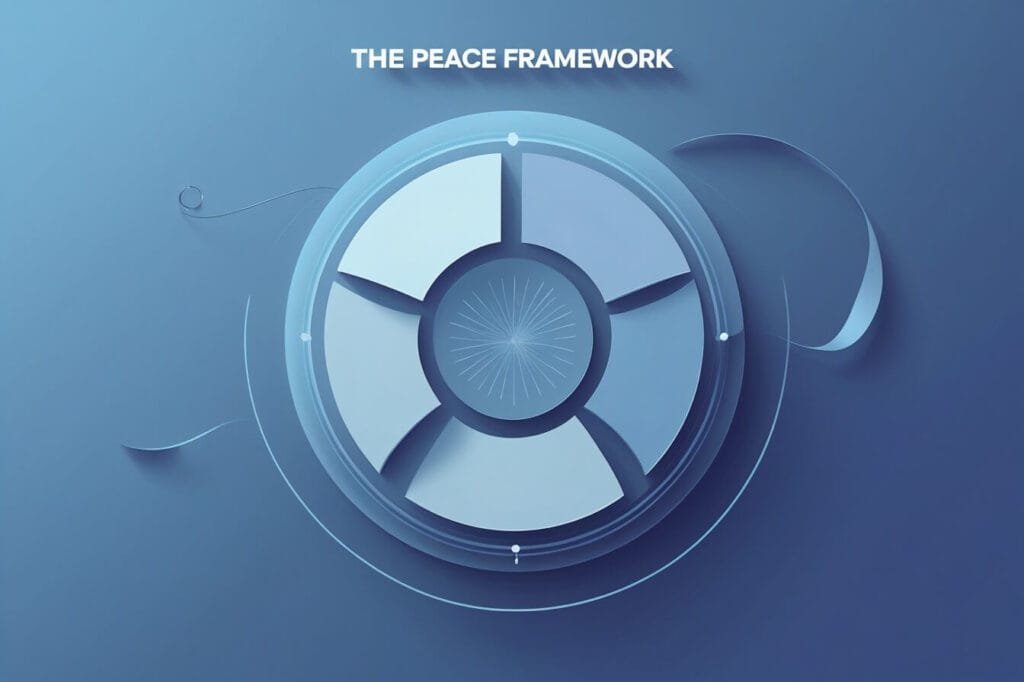
After years of trial and error, I’ve developed what I call the PEACE framework for managing difficult conversations. This isn’t just another communication model – it’s a practical system that I’ve used successfully in everything from divorce mediation to boardroom discussions. The beauty of this framework is that it works regardless of the specific topic or relationship dynamics involved.
P – Prepare with Purpose: Before entering any challenging discussion, I spend time getting crystal clear on my purpose and desired outcome. This isn’t about winning an argument; it’s about understanding what I really want to achieve. Do I want to solve a problem, share information, understand someone’s perspective, or simply be heard? Most difficult conversations go sideways because people enter them with unclear or conflicting purposes. I’ve learned to write down my primary goal and refer back to it if the conversation starts to drift.
E – Establish Emotional Safety: The second step involves creating an environment where both parties feel safe to be vulnerable and honest. This means choosing the right time and place, managing your own emotional state, and explicitly communicating your positive intentions. I might say something like, “I care about our relationship, and I’d like to discuss something that’s been on my mind. My goal is to understand your perspective and work together on a solution.” This simple statement dramatically reduces the other person’s defensive response.
A – Ask Questions and Listen Actively: This is where most people struggle with difficult conversations. Our natural tendency is to talk more when we’re nervous or passionate about something, but the most powerful tool in challenging discussions is actually strategic questioning and deep listening. I’ve found that asking open-ended questions like “Help me understand your perspective on this” or “What would an ideal solution look like for you?” opens up possibilities that arguing never could.
C – Collaborate on Solutions: Instead of trying to convince someone to accept your solution, the collaborative approach involves working together to find mutually acceptable outcomes. This shift from adversarial to collaborative thinking transforms the entire dynamic of difficult conversations. Even when you can’t reach a perfect solution, the process of working together builds trust and understanding that makes future discussions easier.
E – End with Commitment: Every difficult conversation should conclude with clear agreements about next steps, timelines, and follow-up plans. This prevents the same issues from recurring and gives both parties confidence that the conversation was productive. I always end by summarizing what we’ve agreed to and confirming our mutual understanding.
Timing and Environment: Setting the Stage for Success
One of the biggest mistakes I see people make with difficult conversations is rushing into them without considering timing and environment. I learned this lesson the hard way when I tried to address a serious issue with my business partner in a crowded restaurant during lunch rush. The noise, distractions, and public setting made it impossible to have a meaningful discussion, and we both left feeling frustrated and unheard.
The timing of difficult conversations can make or break their effectiveness. I’ve found that people are generally more receptive to challenging discussions when they’re not stressed, hungry, tired, or dealing with other pressures. This means avoiding Monday mornings, late Friday afternoons, or right before major deadlines. Instead, I look for times when both parties can be fully present and engaged. Sometimes this means scheduling the conversation for later rather than trying to force it in the moment.
Environment plays an equally crucial role in the success of difficult conversations. The physical space should be private, comfortable, and free from distractions. This usually means turning off phones, closing laptops, and choosing a location where you won’t be interrupted. I’ve had some of my most productive challenging discussions during walks, because the side-by-side positioning feels less confrontational than sitting across from each other at a table.
Consider also the emotional environment you’re creating. If you’re feeling angry, hurt, or highly emotional, it’s usually better to wait until you can approach the conversation from a calmer state. I’ve developed a personal rule: if I’m feeling more than a 6 out of 10 on the emotional intensity scale, I take time to cool down before initiating difficult conversations. This doesn’t mean suppressing emotions, but rather managing them so they don’t hijack the discussion.
The digital age has added new complexity to timing and environment considerations. Virtual difficult conversations require even more intentional setup than in-person discussions. This means ensuring stable internet connections, using video when possible, and creating a professional backdrop that minimizes distractions. I’ve learned that phone calls are often better than video for highly emotional discussions, as they allow people to focus on voice tone and content without worrying about facial expressions or body language.
Active Listening Techniques That Transform Dialogue
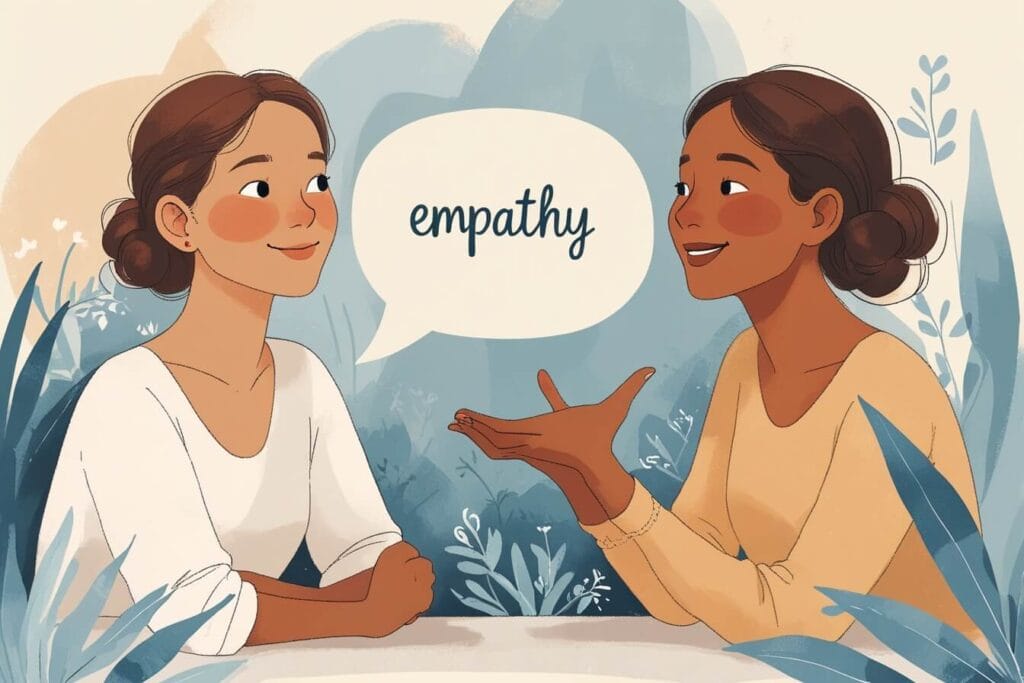
Active listening is perhaps the most underestimated skill in managing difficult conversations, yet it’s also the most powerful tool for reducing conflict and building understanding. Most people think they’re good listeners, but research shows that we typically remember only about 25% of what we hear in conversations. When emotions run high during challenging discussions, this percentage drops even further.
The first technique that revolutionized my approach to difficult conversations is what I call “reflective listening.” Instead of immediately responding to what someone says, I first reflect back what I heard using phrases like “What I’m hearing you say is…” or “It sounds like you’re feeling…” This simple practice accomplishes several things: it confirms that I understood correctly, it shows the other person that I’m genuinely trying to understand their perspective, and it gives me time to process their message before responding.
Another crucial aspect of active listening in difficult conversations is paying attention to what’s not being said. People often communicate their deepest concerns through tone of voice, body language, or what they choose to emphasize or avoid. I’ve learned to listen for underlying emotions, unmet needs, and hidden fears that might be driving someone’s position. For example, when an employee consistently pushes back on new procedures, the surface issue might be about workflow, but the underlying concern might be fear of job security or feeling undervalued.
The technique of “emotional labeling” has been particularly effective in my difficult conversations. This involves identifying and naming the emotions you’re observing in yourself and others. You might say something like, “I can see that you’re frustrated about this situation” or “I’m feeling a bit overwhelmed by all these different concerns.” This practice helps normalize emotions and creates space for them to be acknowledged rather than suppressed or ignored.
One of the most challenging aspects of active listening during difficult conversations is managing your own internal dialogue. While the other person is talking, your brain is often preparing counterarguments, judging what they’re saying, or planning your response. I’ve had to train myself to quiet this internal chatter and stay fully present with the speaker. This requires practice, but the payoff is enormous in terms of building trust and understanding.
De-escalation Strategies for Heated Moments

Even with the best preparation and intentions, difficult conversations can sometimes escalate into heated exchanges. Having effective de-escalation strategies is crucial for preventing these moments from derailing the entire discussion. Through years of experience, I’ve developed a toolkit of techniques that can quickly cool down intense situations and get conversations back on track.
The most important principle in de-escalation is to resist the natural urge to match the other person’s energy level. When someone raises their voice or becomes aggressive, our instinct is often to respond in kind. However, this only escalates the situation further. Instead, I’ve learned to consciously lower my voice, slow down my speech, and maintain calm body language. This technique, called “emotional contagion,” works because humans naturally mirror the emotional state of the people around them.
One of my go-to de-escalation phrases for difficult conversations is “Help me understand…” This simple statement accomplishes several things: it acknowledges that there’s something I don’t fully grasp, it invites the other person to explain their perspective, and it shifts the dynamic from adversarial to collaborative. I might say, “Help me understand what’s most important to you about this situation” or “Help me understand what you need from me right now.”
The technique of “emotional validation” is particularly powerful during heated moments in difficult conversations. This doesn’t mean agreeing with someone’s position, but rather acknowledging their emotional experience. You might say, “I can see that this is really important to you” or “It’s clear that you’re feeling strongly about this.” This validation often helps people feel heard and understood, which naturally reduces their need to escalate.
Sometimes, the best de-escalation strategy is to take a strategic break. If emotions are running too high for productive discussion, it’s perfectly acceptable to say, “I think we both care about resolving this, and I’d like to take a few minutes to collect my thoughts so we can have the best possible conversation.” This gives everyone time to calm down and approach the discussion with fresh perspective.
Physical techniques can also be helpful for managing your own state during intense difficult conversations. Deep breathing, relaxing your shoulders, and maintaining open body language all help regulate your nervous system and prevent you from adding fuel to the fire. I’ve found that focusing on my breathing for just 30 seconds can dramatically shift my ability to respond thoughtfully rather than react emotionally.
Building Bridges: Finding Common Ground
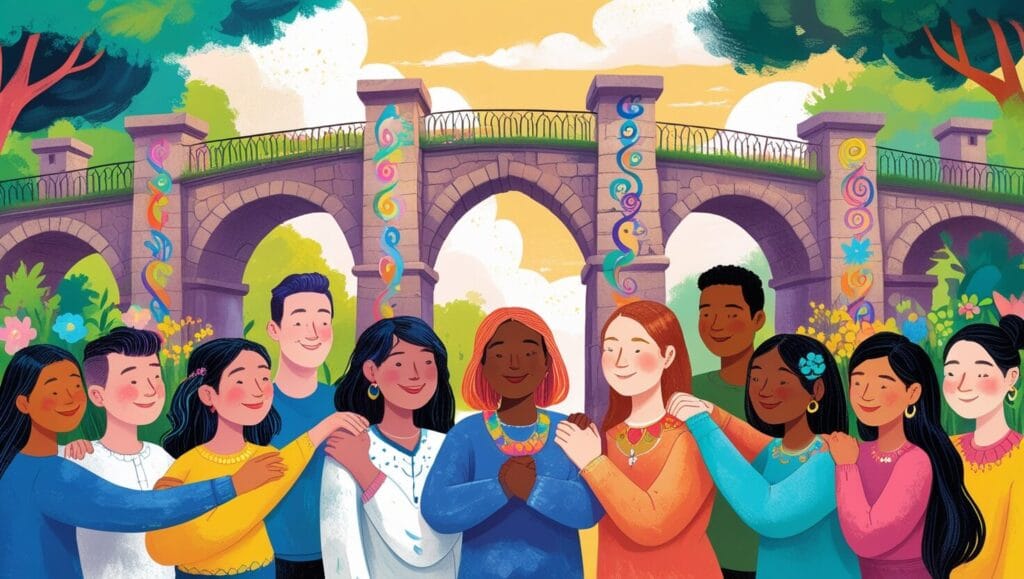
One of the most transformative insights I’ve gained about difficult conversations is that conflict often occurs not because people have fundamentally different goals, but because they’re focused on different solutions or approaches. When I started looking for underlying common ground rather than arguing about surface-level disagreements, the entire dynamic of challenging discussions changed.
The key to finding common ground in difficult conversations is to dig deeper than positions and focus on underlying interests and values. For example, in a workplace dispute about flexible work arrangements, the surface conflict might be about specific policies or procedures. However, when you explore deeper, you might discover that both parties value productivity, work-life balance, and team cohesion – they just have different ideas about how to achieve these shared goals.
I’ve developed a technique I call “value mapping” for difficult conversations. This involves explicitly identifying and acknowledging the values that both parties share before diving into areas of disagreement. I might say something like, “I think we both want what’s best for our team” or “It sounds like we both value fairness and transparency.” This creates a foundation of agreement that can support the conversation even when specific points of disagreement arise.
Another powerful approach is to focus on future outcomes rather than past grievances. Many difficult conversations get bogged down in rehashing who did what wrong or why previous approaches failed. While it’s important to acknowledge past issues, the most productive discussions focus on what both parties want to see happen moving forward. Questions like “What would success look like for both of us?” or “How can we prevent this situation from happening again?” help shift the conversation from blame to collaboration.
The concept of “expanding the pie” has been particularly useful in my difficult conversations. This involves looking for creative solutions that address everyone’s core needs rather than assuming that one person’s gain must be another’s loss. For instance, in a family discussion about holiday plans, instead of arguing about which set of parents to visit, you might explore alternatives like hosting at your own home, alternating years, or finding ways to include both families.
Sometimes, the common ground in difficult conversations is simply a shared commitment to preserving the relationship or solving the problem. Even when you can’t agree on specifics, acknowledging that both parties care about the outcome and want to find a solution creates a collaborative foundation that makes resolution more likely.
Handling Different Personality Types in Challenging Discussions
One of the biggest game-changers in my approach to difficult conversations has been learning to adapt my communication style to different personality types. What works with one person might completely backfire with another, and understanding these differences can mean the difference between productive dialogue and escalated conflict.
With analytical personalities, I’ve learned that difficult conversations are most effective when I come prepared with data, facts, and logical arguments. These individuals want to understand the reasoning behind decisions and appreciate detailed explanations. When discussing performance issues with an analytical team member, I make sure to have specific examples, metrics, and clear cause-and-effect relationships. They respond well to structured approaches and appreciate when I acknowledge their need for time to process information.
Expressive personalities bring different challenges and opportunities to difficult conversations. These individuals are often motivated by recognition, relationships, and emotional connection. They may take feedback personally or become defensive if they feel their efforts aren’t being acknowledged. With expressive types, I’ve found success in starting challenging discussions by affirming their value and contributions before addressing areas for improvement. They also appreciate when I share my own emotions and experiences, as this creates the personal connection they crave.
Driver personalities want difficult conversations to be direct, efficient, and focused on results. They have little patience for lengthy explanations or emotional processing and prefer to cut straight to the bottom line. When addressing issues with drivers, I state the problem clearly, explain the impact, and quickly move to solution-focused discussion. They appreciate when I respect their time and avoid what they might perceive as unnecessary details or emotional appeals.
Amiable personalities often find difficult conversations particularly stressful because they value harmony and relationships above all else. They may agree to things they don’t actually support just to avoid conflict, or they might shut down completely when faced with challenging discussions. With amiable types, I’ve learned to emphasize our relationship, provide plenty of reassurance, and give them time to process and respond. They often need explicit permission to disagree or express concerns.
The key insight here is that difficult conversations aren’t one-size-fits-all. The same message delivered in different ways can produce completely different outcomes depending on the receiver’s personality type. This doesn’t mean being manipulative or inauthentic, but rather being thoughtful about how to communicate most effectively with each individual.
Technology and Digital Communication Challenges
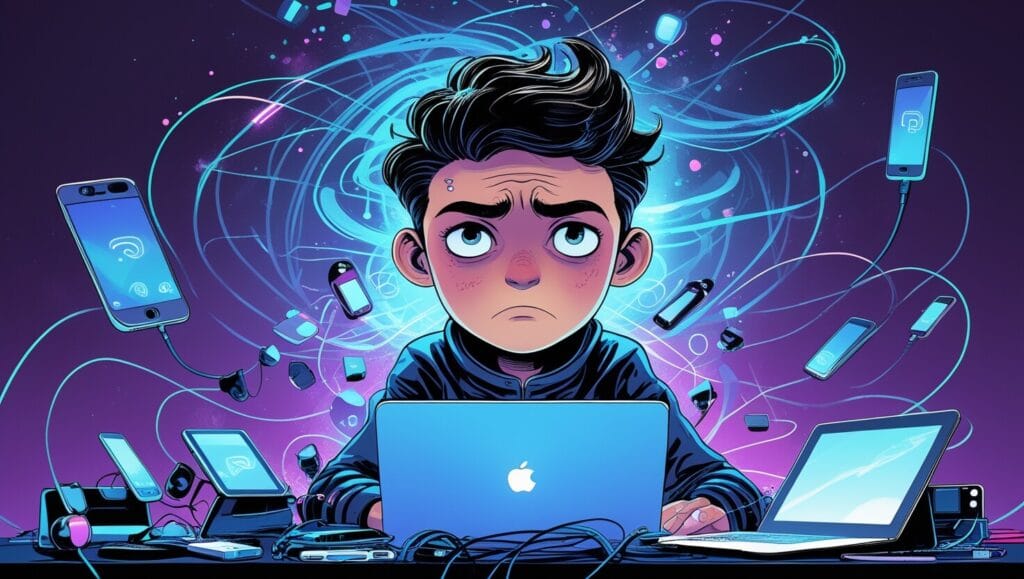
The digital age has fundamentally changed the landscape of difficult conversations, creating new challenges and opportunities that didn’t exist even a decade ago. As someone who’s navigated countless challenging discussions across various digital platforms, I’ve learned that technology can either facilitate or complicate these interactions depending on how it’s used.
One of the biggest mistakes I see people make is attempting to have serious difficult conversations through text messages or email. These mediums strip away crucial nonverbal communication cues like tone of voice, facial expressions, and body language, which account for up to 93% of communication effectiveness. I learned this lesson the hard way when a well-intentioned email to a colleague about project concerns was interpreted as harsh criticism, leading to weeks of damaged relationships and misunderstandings.
Video conferencing has become essential for difficult conversations in our increasingly remote world, but it comes with its own set of challenges. Technical issues can disrupt the flow of sensitive discussions, and the slightly delayed audio can make it harder to read conversational cues. I’ve developed specific protocols for virtual difficult conversations, including testing technology beforehand, having backup communication methods ready, and being more explicit about emotional states since subtle cues are harder to read on screen.
The asynchronous nature of digital communication can actually be beneficial for some difficult conversations. It allows people time to process information and respond thoughtfully rather than reactively. However, it can also create anxiety and misunderstandings when people read too much into delayed responses or struggle with the ambiguity of written communication. I’ve found that setting clear expectations about response times and communication preferences helps mitigate these issues.
Social media has added another layer of complexity to difficult conversations. Private disagreements can quickly become public conflicts, and the permanence of digital communication means that poorly worded messages can have lasting consequences. I’ve developed a strict rule about never engaging in serious difficult conversations through social media platforms, instead using these interactions as opportunities to move discussions to more appropriate channels.
The key to successful digital difficult conversations is being intentional about medium selection. Quick clarifications might work fine over instant messaging, but complex emotional discussions almost always require real-time voice or video communication. Understanding the strengths and limitations of each digital communication method helps ensure that technology supports rather than hinders challenging discussions.
Workplace Applications: Professional Difficult Conversations

The workplace presents unique challenges for difficult conversations because of power dynamics, professional relationships, and organizational cultures that may not always support open dialogue. Throughout my career, I’ve learned that mastering professional difficult conversations is essential for career advancement, team effectiveness, and organizational success.
Performance-related difficult conversations are among the most common and challenging in workplace settings. Whether you’re a manager addressing underperformance or an employee raising concerns about workload or expectations, these discussions require careful preparation and skilled execution. I’ve found that the most effective performance conversations focus on specific behaviors and their impact rather than making judgments about character or capability. Instead of saying “You’re not meeting expectations,” I might say “I’ve noticed that the last three reports were submitted after the deadline, which affects our team’s ability to meet client commitments.”
Conflict resolution between team members requires a different approach to difficult conversations. As a mediator in these situations, I’ve learned to focus on understanding each person’s perspective before attempting to find solutions. This often involves separate initial conversations with each party to understand their concerns and desired outcomes, followed by a facilitated discussion where both parties can share their perspectives in a structured environment.
Upward difficult conversations – those with superiors or senior management – require particular skill and diplomacy. These discussions often involve challenging existing policies, requesting resources, or addressing problematic behavior from those in positions of authority. I’ve found that framing these conversations in terms of organizational benefit and coming prepared with specific suggestions for improvement increases the likelihood of positive outcomes.
The remote work environment has created new categories of workplace difficult conversations. Issues around communication expectations, work-life boundaries, and virtual team dynamics require different approaches than traditional in-person workplace discussions. I’ve had to adapt my communication style to account for the challenges of building rapport and reading nonverbal cues in virtual environments.
Cultural sensitivity has become increasingly important in workplace difficult conversations as organizations become more diverse and global. What might be considered direct and efficient communication in one culture could be perceived as rude or aggressive in another. I’ve learned to research and respect cultural communication preferences while still addressing necessary workplace issues effectively.
Personal Relationships: Navigating Intimate Difficult Conversations

Difficult conversations in personal relationships carry higher emotional stakes and deeper complexity than professional interactions. When we’re discussing issues with spouses, family members, or close friends, the outcome doesn’t just affect our work or projects – it can fundamentally impact our happiness, sense of security, and most important relationships.
Romantic relationships present unique challenges for difficult conversations because of the intimate nature of the partnership and the emotional vulnerability involved. I’ve learned that timing is especially crucial in these discussions. Attempting to address relationship issues when one or both partners are stressed, tired, or distracted often leads to escalated conflict rather than resolution. The most productive relationship conversations I’ve experienced have happened when both parties are calm, focused, and committed to understanding each other’s perspectives.
Financial discussions represent some of the most challenging difficult conversations in romantic relationships. Money touches on deep-seated values, fears, and aspirations, making these discussions particularly emotionally charged. I’ve found that approaching financial conversations with curiosity about each other’s money backgrounds and beliefs, rather than judgment about spending habits or financial decisions, creates a more productive foundation for these discussions.
Family dynamics add another layer of complexity to difficult conversations. Long-standing patterns, historical grievances, and multiple relationships all come into play when addressing family issues. I’ve learned that attempting to resolve decades of family dysfunction in a single conversation is usually unrealistic. Instead, focusing on specific behaviors and their current impact, while acknowledging the complexity of family history, tends to be more effective.
Difficult conversations with children require age-appropriate approaches that balance honesty with emotional safety. Young children need simple, concrete explanations and lots of reassurance, while teenagers often appreciate more direct, adult-like discussions that respect their growing independence. The key is adapting your communication style to match the child’s developmental stage and emotional needs.
Boundary-setting conversations with family members and friends can be particularly challenging because they often involve changing long-established patterns of interaction. These difficult conversations require clarity about your own needs and limits, combined with compassion for how these changes might affect others. I’ve learned that being consistent in enforcing boundaries after these conversations is just as important as the initial discussion.
Recovery and Repair: What to Do When Conversations Go Wrong
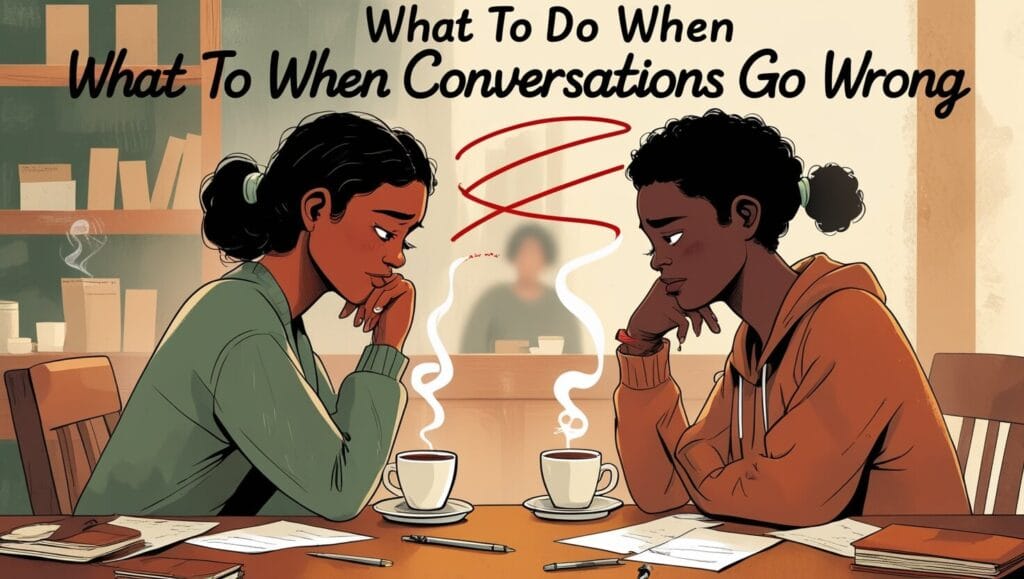
Even with the best preparation and intentions, some difficult conversations don’t go as planned. Learning how to recover from these situations and repair damaged relationships is just as important as knowing how to conduct the conversations in the first place. I’ve had my share of discussions that ended badly, and the lessons learned from these experiences have been invaluable.
The first step in recovery from failed difficult conversations is taking responsibility for your own contribution to the outcome. This doesn’t mean accepting blame for everything that went wrong, but rather honestly examining your role in the interaction. Did you come to the conversation with hidden agendas or unrealistic expectations? Were you truly listening, or were you just waiting for your turn to speak? Did your emotions hijack your better judgment? This self-reflection, while sometimes uncomfortable, is essential for learning and growth.
Timing is crucial when attempting to repair relationships after difficult conversations have gone wrong. Immediately after a heated exchange, emotions are often still running high, making productive follow-up unlikely. I’ve learned to wait at least 24 hours before attempting repair conversations, giving both parties time to cool down and gain perspective. However, waiting too long can allow hurt feelings to solidify into resentment, so finding the right balance is important.
The repair conversation itself requires a different approach than the original difficult conversation. The focus should be on acknowledging what went wrong, taking responsibility for your part, and expressing genuine desire to improve the relationship. I might say something like, “I’ve been thinking about our conversation yesterday, and I realize that I wasn’t really listening to your concerns. I’d like to try again if you’re willing.” This approach demonstrates growth and commitment to the relationship.
Sometimes, difficult conversations fail because the timing, setting, or approach wasn’t right for the specific situation or individuals involved. In these cases, the repair process might involve changing the format of future discussions. Perhaps a written exchange would work better than a face-to-face conversation, or maybe involving a neutral third party could help facilitate more productive dialogue.
It’s important to recognize that not all difficult conversations can be successfully repaired. Sometimes, despite our best efforts, relationships are damaged beyond repair, or the other party isn’t willing to engage in the recovery process. In these situations, learning to accept the outcome and focus on what you can control – your own behavior and responses – becomes the path forward.
Building Long-Term Communication Skills
Mastering difficult conversations is not a destination but a lifelong journey of skill development and personal growth. The strategies and techniques I’ve shared are most effective when practiced regularly and integrated into your overall communication approach. Building these skills requires patience, commitment, and willingness to learn from both successes and failures.
One of the most valuable investments you can make in improving your difficult conversations skills is developing greater emotional intelligence. This involves becoming more aware of your own emotional triggers, learning to regulate your responses, and becoming more skilled at reading and responding to others’ emotional states. I’ve found that regular mindfulness practice, journaling, and seeking feedback from trusted friends or mentors all contribute to this development.
Practice opportunities for difficult conversations exist in everyday interactions, not just in major conflicts or crises. The skills you use to address minor disagreements with colleagues, navigate differences of opinion with friends, or discuss household responsibilities with family members are the same ones that will serve you in more challenging situations. I’ve learned to view every interpersonal challenge as an opportunity to practice and refine these crucial skills.
Continuous learning is essential for staying current with difficult conversations best practices and adapting to changing social and technological environments. This might involve reading books on communication and conflict resolution, attending workshops or training sessions, or working with a coach or therapist to develop specific skills. The investment in learning pays dividends in all areas of life.
Building a support network of people who can provide feedback, encouragement, and accountability in your difficult conversations journey is also important. This might include mentors who have strong communication skills, peers who are also working on these abilities, or professional counselors who can provide specialized guidance. Having people you can debrief with after challenging conversations helps you process the experience and identify areas for improvement.
Mastering the Art of Conflict-Free Communication
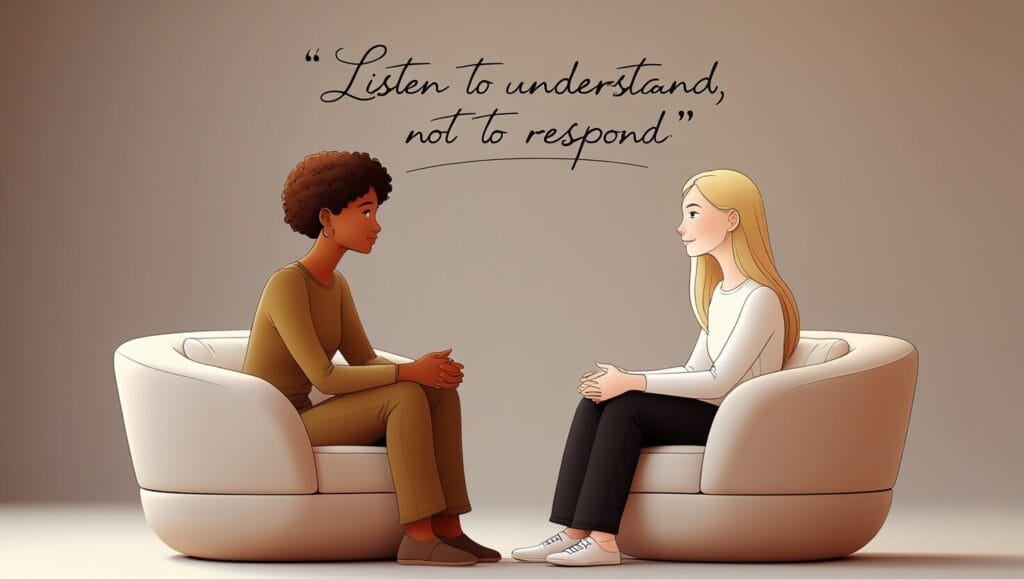
The journey of mastering difficult conversations has taught me that these challenging interactions are not obstacles to be avoided, but opportunities for deeper understanding, stronger relationships, and personal growth. Every difficult conversation we navigate successfully builds our confidence and competence for future challenges, creating a positive cycle of improvement and connection.
The strategies and frameworks I’ve shared – from the PEACE method to personality-type adaptations to digital communication considerations – are tools that can be adapted to your unique situation and communication style. Remember that becoming skilled at difficult conversations is a process, not a destination. Each interaction offers lessons and opportunities for growth, whether it goes exactly as planned or teaches you something unexpected about yourself or others.
The investment in developing these skills pays dividends far beyond just avoiding conflict. When you can navigate difficult conversations with confidence and skill, you open doors to deeper relationships, better workplace dynamics, and more effective problem-solving in all areas of life. You become someone others trust to handle challenging situations with grace and wisdom.
As we move forward in 2025 and beyond, the ability to have productive difficult conversations will only become more important. Our increasingly connected yet divided world requires people who can bridge differences, find common ground, and build understanding across various perspectives and backgrounds. By mastering these skills, you’re not just improving your own life – you’re contributing to a more collaborative and understanding society.
I encourage you to start small, practice regularly, and be patient with yourself as you develop these crucial abilities. Remember that every expert in difficult conversations started as a beginner, and every challenging interaction is an opportunity to grow. Share your experiences, learn from others, and continue refining your approach. The world needs more people who can turn difficult conversations into opportunities for connection and growth.

